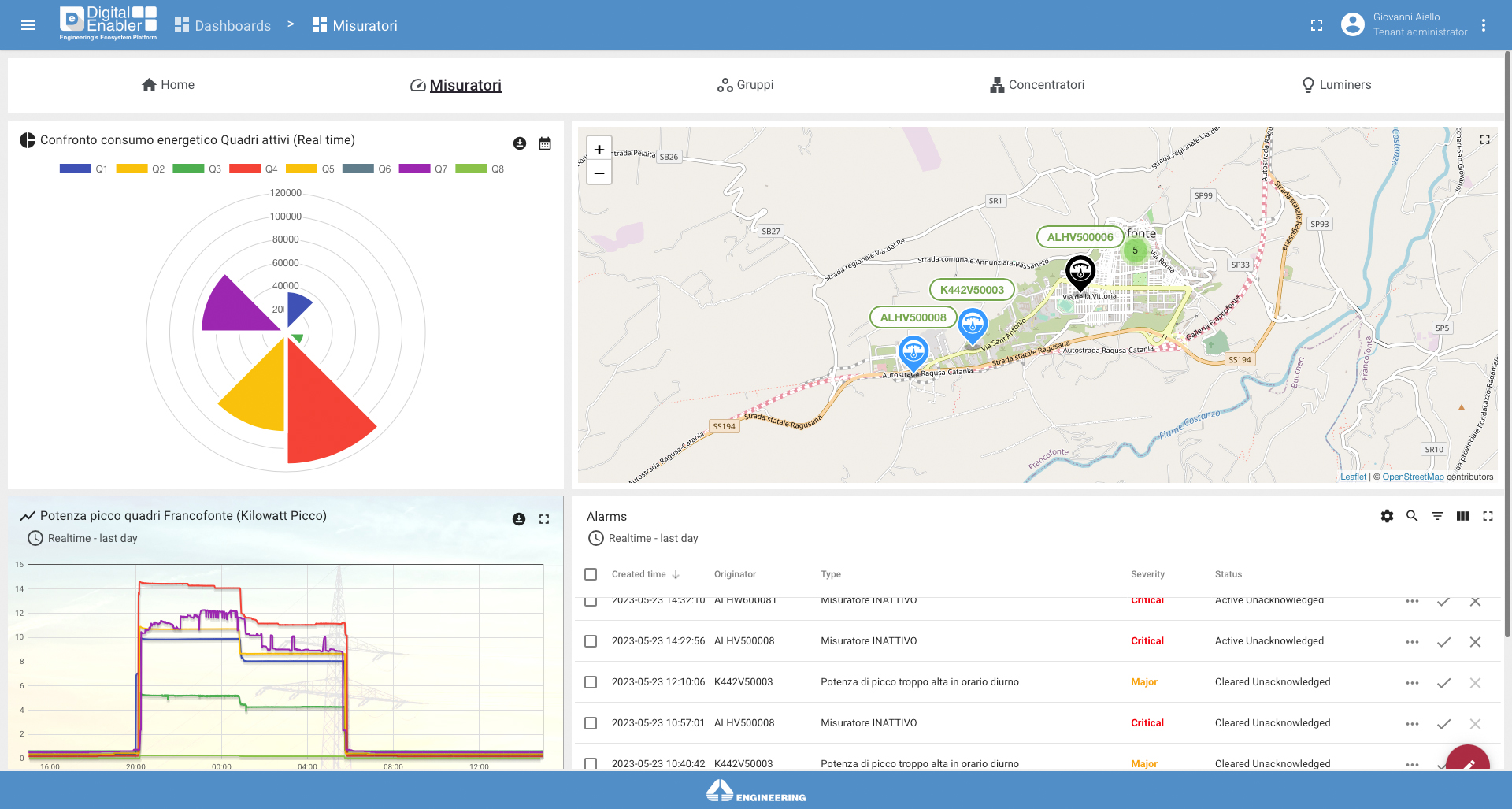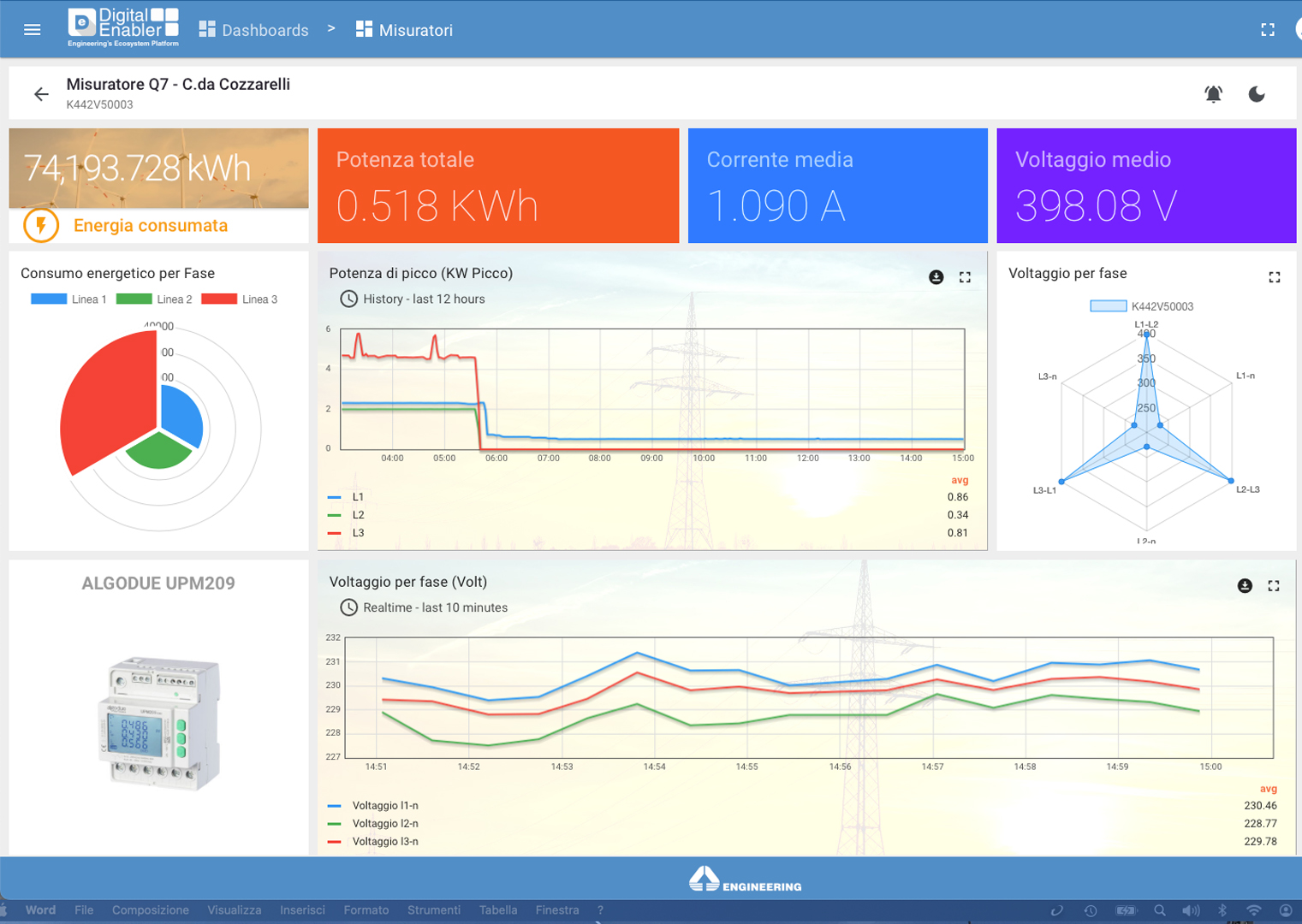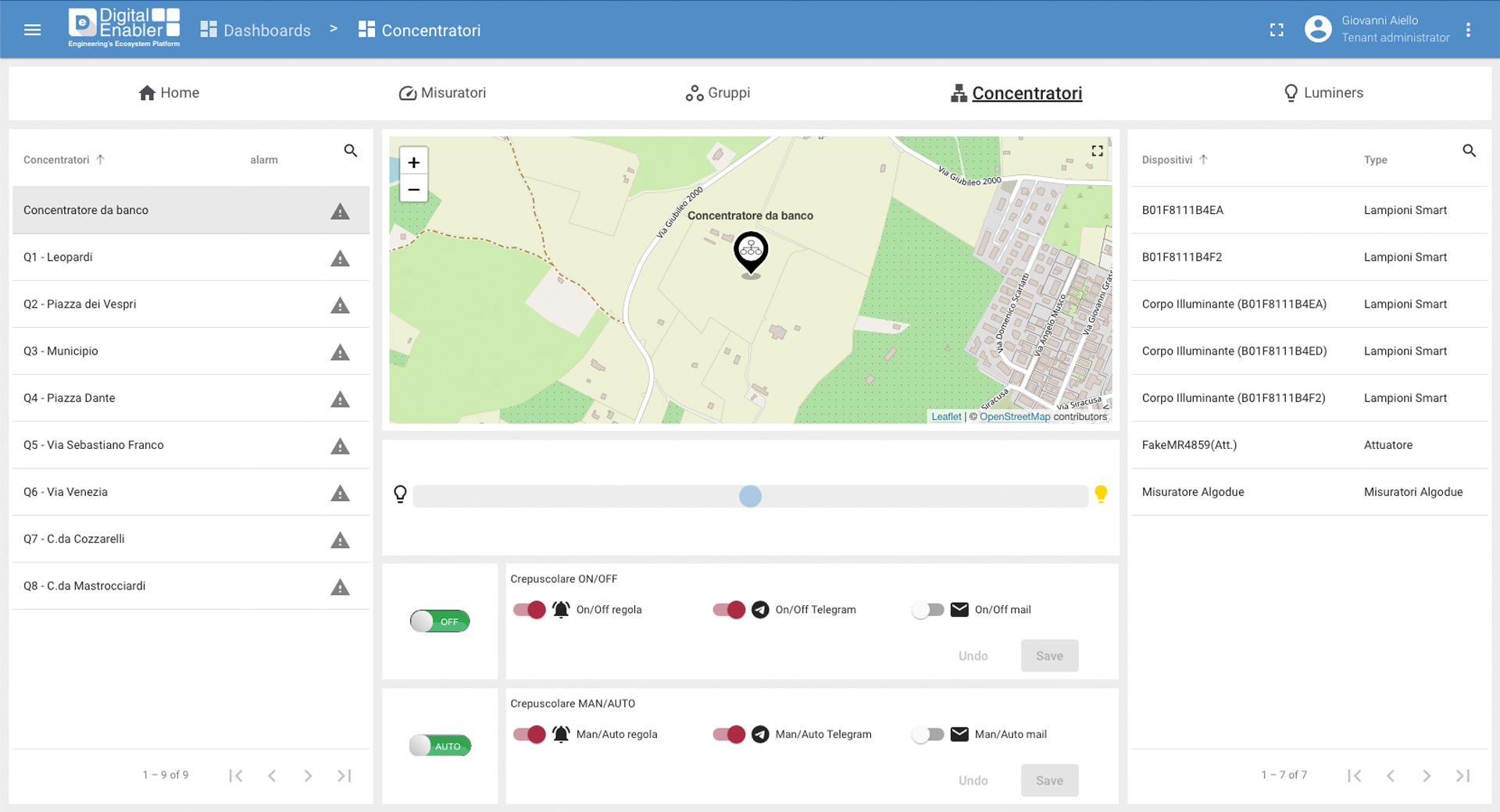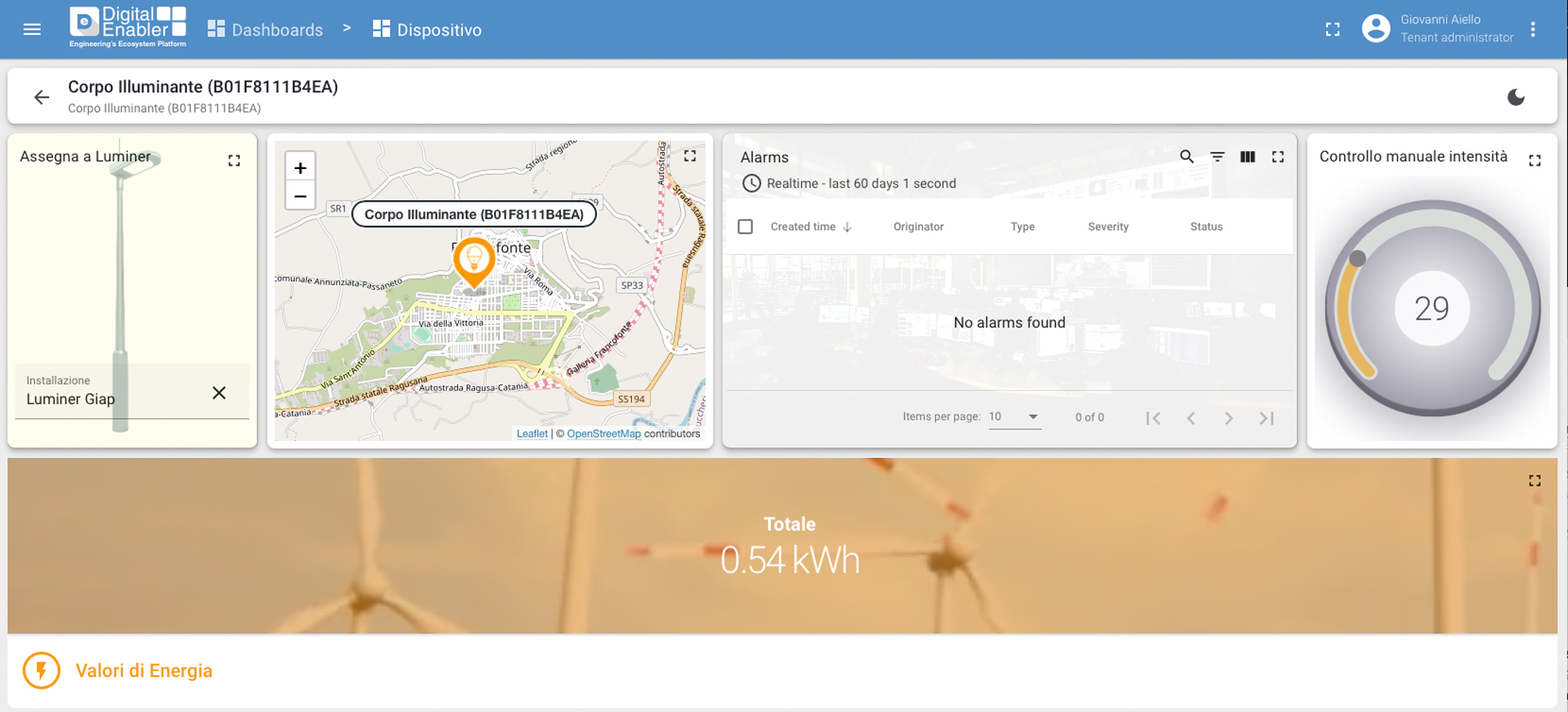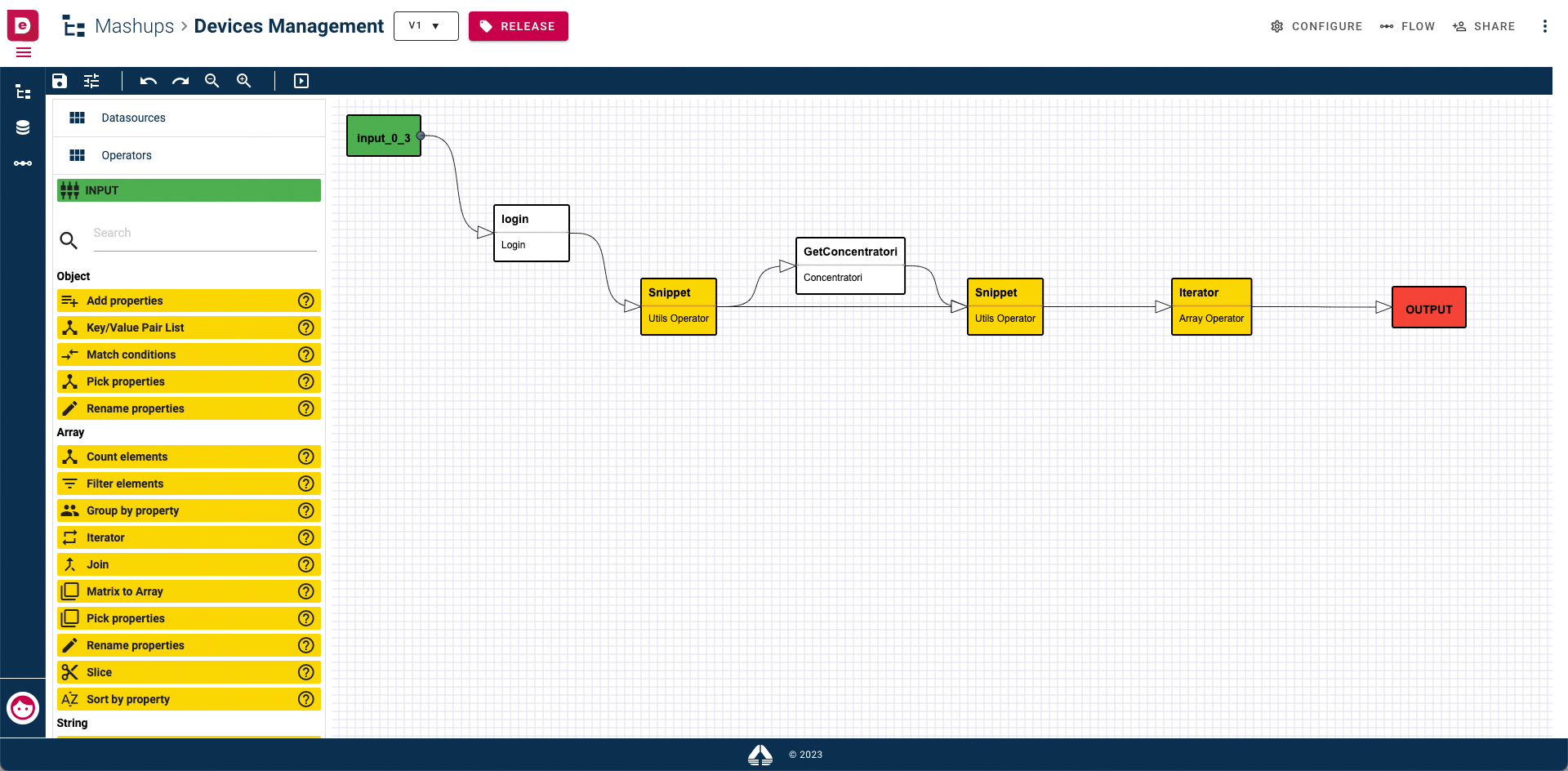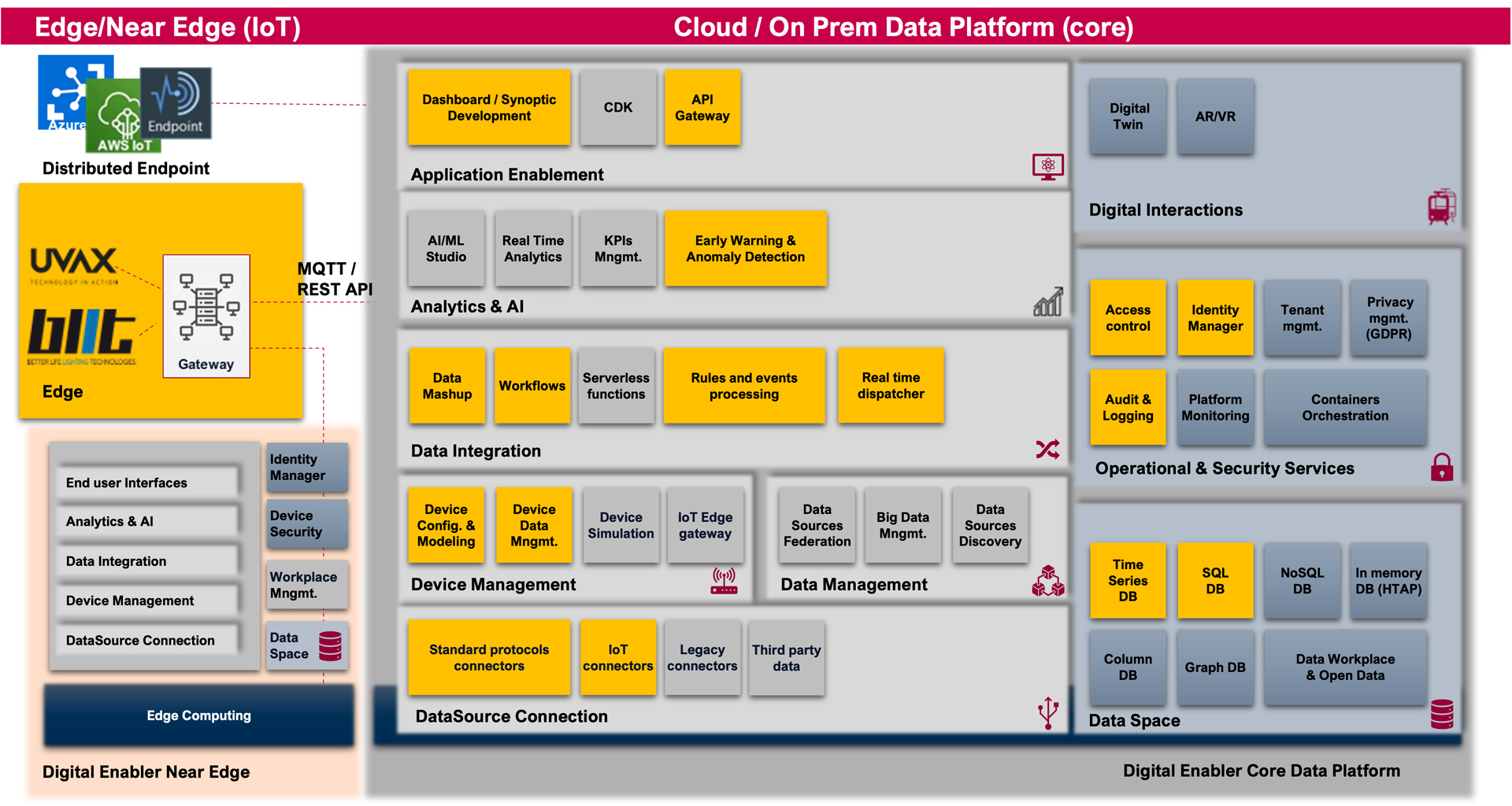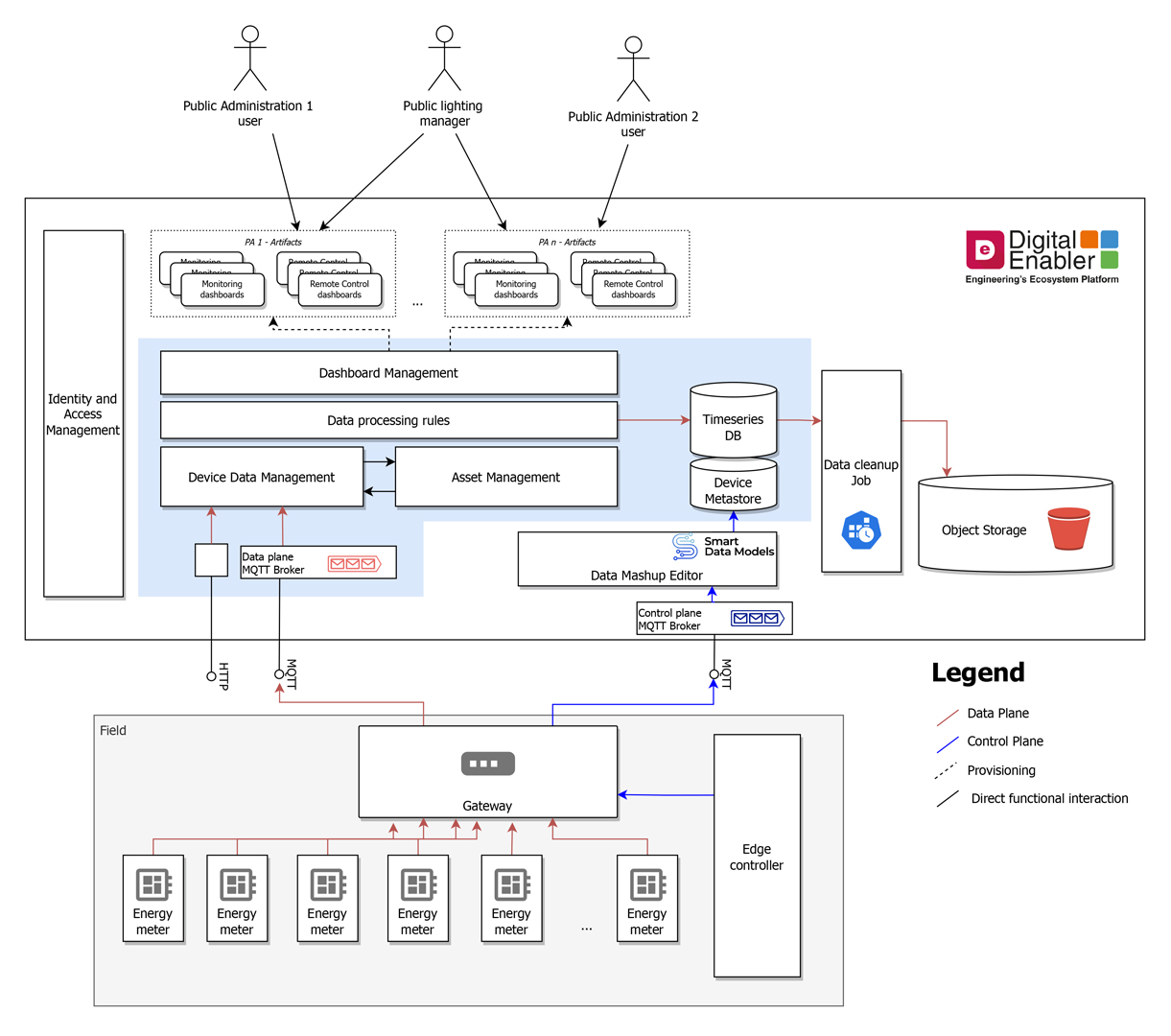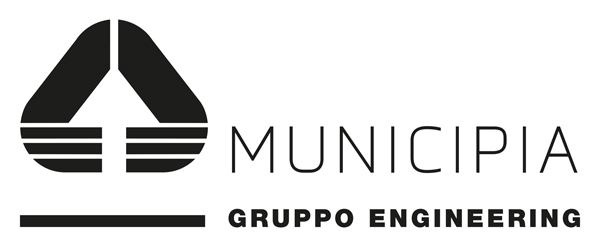Challenge & Context
One aspect of innovating cities is taking actions to reduce energy consumption, pollution and thus free up economic resources to improve public and private sector innovative services.
These are just a few of the goals of the projects developed by Municipia — the Italian company of Engineering Group working on Augmented Cities — which are now emphasizing energy efficiency policies.
This FIWARE impact story aims to share the experience of the RUACH Consortium, an Italian Public Private Partnership comprised of 40 municipalities in Sicily, including Francofonte (Siracusa), San Teodoro (Messina), Acquaviva Platani (Caltanissetta), Comiso (Ragusa), Mojo Alcantara (Messina), and several private companies.
The technical specification called for the installation of a set of physical components and advanced software applications to receive, monitor, and operate remotely on data assets distributed throughout the cities, as well as predict what might happen if certain conditions were met.
The scope of these projects includes improving the efficiency of street lighting, with the goal of lowering costs and reducing energy waste.
The concept has been continuously evolving from street lighting to smart lighting to smart cities. Driven by the need for sustainability and control, cities are embracing such smart solutions. The impact story identifies some of these drivers and shows how street lighting can be an incredible infrastructure option for smart city development.
Street lighting accounts for a significant portion of total energy consumption, and in many cases, its level seems excessive. Thanks to digital technology, lighting levels can be easily lowered to achieve energy savings. For example, unnecessary lighting levels can be reduced during low traffic volumes. On the other hand, in specific situations, such as for traffic safety reasons, light levels can and should be increased, even during low traffic volumes.
Data collected in Italy shows that the annual consumption of electricity for public lighting was approximately 6,000 GWh, with a per capita consumption of 100 kWh, which is double the European average of 51 kWh.
In Italy, the total cost for public lighting in was 1.7 billion euros, which amounts to about 28.7 euros per capita. France had a similar expenditure of 20.3 euros per capita, while Germany was the most cost-effective with a per capita expenditure of 5.8 euros.
Streetlights not only have environmental effects but also social benefits. They help people feel safe and can reduce crime rates in the area.
Solution
The Municity solution developed by Municipia for the RUACH Consortium, is a multi-tenant, cloud-native platform that is integrated with IoT devices, including Smart streetlights, power meters, and cameras. This allows for remote detection, monitoring, and management of information from the urban ecosystem, which can improve the management of streetlights and overall safety for citizens.
The Smart streetlights control system offers the following features to customers:
- Easy asset and device management;
- Self-service creation of real-time dashboards;
- Graphical editor for data integration and complex logic-based alarm triggers;
- Interoperability with Smart streetlights, concentrators, and power meters from different vendors (UVAX, BLLT, Algodue) via MQTT / API REST protocols;
- Status monitoring dashboard with with geolocation map of light points and power meters;
- Manual remote control dashboard for on/off, and dimming light flow commands to concentrators;
- Dashboard preparation with energy consumption graphs of current and historical light points, exportable in Excel format;
- Lighting pattern definition and scheduling for automatic remote control, clock aligned with an SNTP server. (e.g., turn on main street lights for 12 hours while perpendicular street lights off during the day);
- Logical grouping of light points by category to trigger group on/off/dimming actions easily;
- Rule preparation to trigger and send alarms via email and Telegram channels when specific events occur (e.g., instant energy consumption in a specific city district exceeds a fixed threshold);
- AI-powered dashboards that predict and display future energy consumption and perform what-if analysis.
Municity is a vertical platform of the Digital Enabler®, which is a scalable, cloud-native, multi-tenant platform with microservices architecture orchestrated on a Kubernetes environment. It can discover, collect, and provide value to data scattered in heterogeneous sources, providing a single point of access to an integrated urban knowledge base.The main features of Municity include:
- Rapid development of IoT applications;
- Interoperability of different systems;
- A suite of independent and interoperable tools;
- Management of IoT devices at different levels (Edge, Near Edge, and Cloud) and of different types that can interact through standard protocols such as HTTP, MQTT, OPC-UA, ModBus and others;
- Tools that provide scalability in Big Data and Data Stream management;
- Graphical approaches to design and monitor processes and to integrate/harmonize data according to standard data models without requiring specific programming skills (low code);
- AI tools and a catalogue of ready-to-use algorithms that can be used to infer new insights from data and analyze trends;
- A layer of API standards ensuring maximum interoperability with existing third-party systems/solutions of customers.
Municity manages the following entities:
Assets
Real-world objects that can be associated with one or more devices. Attributes can be assigned to, telemetries can be sent to, and alarms can be triggered for each asset. Examples of assets could be palaces, squares, or even whole districts.
Devices
Any kind of sensors/actuators (smart street lights, temperature/humidity sensors, vehicles, etc). Attributes, telemetries, and trigger alarms, can all be associated with a device’s profile.
Device Profile
Characteristics and behaviours common to a set of devices. It defines the details of the communication channel with the devices to which the profile is associated (MQTT, HTTP, CoaP protocols).
Rules
Graphical representation of data processing workflows and rules to trigger alarms, interact with third-party systems, and send telemetries.
Data Mashup
Harmonizes data in standard data models and bridges with Edge devices.
Alarms
Events with an associated level of criticality that occur and can notify users through email and Telegram channels
Dashboards
Highly configurable dashboards for real-time data visualization. The tenant manager can create new dashboards using an extensive library of widgets (charts, maps, tables, etc.).
How it works
The Digital Enabler platform has a decoupled microservices architecture that allows for composability. In the Smart Lighting use case discussed in this Impact Story, the yellow-highlighted modules of the Digital Enabler’s logical architecture were instantiated.
The scalable architecture of the Smart Lighting control solution (shown in figure 7) is classified FIWARE ready which enables the use of FIWARE IoT Agents and the normalization of data in Smart Data Models thanks to the Data Mashup Editor.
The architecture used in this solution is an event-driven microservice architecture that receives from two levels: the control plane and the data plane.
The control plane enables the self-provisioning on the cloud of edge terminations such as circuits and smart lamps. The edge is responsible for notifying the cloud about events like the connection of a new device to the network through MQTT Messages. On the Cloud-side, the Data Mashup Editor receives these events and updates the digital representation of the physical topology.
After a device is registered, it can send measures directly to the Cloud using the MQTT protocol (HTTP is also supported). The Cloud-side component responsible for receiving these measures is called the “Device Manager” and it triggers the data processing rules. These rules oversee post-processing on the data and their persistence in a Time series DB.
All devices and their measures can be aggregated into higher level logical entities called assets, which are managed by the Asset Manager. This component allows for the definition of entities other than devices and the creation of hierarchies among them.
Once the data is persisted, it can be displayed on self-service dashboards using the Dashboard Manager. In the case of Street Lighting, we created dashboards for multiple public administrations that can be consumed by end-users according to standard ACL policies.
Benefits & Impact
Street lighting is an essential infrastructure for any city and can be considered the backbone of smart cities worldwide due to its omnipresence, high density, and connection to the power grid. Moreover, cities are upgrading their street lighting systems to LED lamps, providing even more power and energy efficiency.
To create a smart city, sensors must be installed throughout the city on a physical infrastructure that typically inlcudes buildings, roads, power supply lines, and water supply systems. However, this infrastructure requires significant investment, and can be complex.
In contrast, mounting sensors on street light poles is a less complex and disruptive option that can be integrated throughout the city. Additionally, individual lighting control provides uninterrupted power at the pole level, which is not possible with legacy street lighting that powers off during the day.
The project led by Municipia aims to reduce CO2 emissions and electricity costs by enabling cities to use lighting only where and when necessary. The system is integrated with sensors and video cameras that detect, monitor, and manage information from the urban ecosystem, improving local surveillance for the benefit of public safety.
The savings from reduced energy consumption, can be redirected towards additional services, and innovative services can be provided for interaction with the local area using software technologies.
The project has been implemented in the municipalities of Comiso and Francofonte. Comiso has approximately 7,132 light points, 96 concentrators, and 50 Algodue meters, while Francofonte has approximately 550 light points, 8 concentrators, and 8 Algodue meters.
Added value through FIWARE
The solution is based entirely on open standards, open APIs, and Smart Data Models, following FIWARE Foundation and OASC principles. It is “Powered by FIWARE”, utilizing FIWARE Generic Enablers and NGSI APIs, which enable the integration of different components and systems, ensuring that the platform is interoperable, portable, and easily implemented on a global scale.
The Digital Enabler® is an ecosystem platform that can be applied in a variety of domains and situations, making it possible to relate to other software and applications while being replicated for different purposes quickly and cost effectively.
At the centre of the system is the Context Broker, a FIWARE Generic Enabler that integrates data from multiple systems, creating a holistic view of contextualised information.
The Context Broker uses FIWARE NGSI v2 specifications to provide real-time updates and access to information that contextualises the data being displayed, such as updates, queries, and notifications. This enables organisations to monitor their metrics in real-time through live updates. It also allows context information to be shared with third parties to improve processes and innovation across the data value chain.
Next Steps
Municipia sees this reference in Italy as opening up a significant global market. President Stefano De Capitani confirms: “Municipalities pay increasing attention to energy efficiency policies, which are essential for fighting pollution, ensuring access to renewable resources. However, many of them still don’t have a system capable of measuring/predicting consumption and of applying energy saving logics combined with use of the IoT. That’s why Municipia provides innovative services and projects to reduce energy consumption and to free up economic resources, giving local governments and citizens concrete answers in terms of safety, quality of life and innovation”.
For the RUACH Consortium, the impact on the cities is relevant. As Davide Maimone (CEO, RUACH Scarl) asserts: “The project has involved a multidisciplinary working group with the aim of finding a technical solution for a smart city integrated solution that, thanks to modern technology of IoT, has an application area wider than public lighting. The union of our two specific skills and areas (Energy and Digital) has led to the creation of an integrated system compliant with what is defined by the European Union and in line with the forthcoming investments in the public sector (such as renewable energy communities, e-mobility)”.
References
Lanfranco Marasso
R&I Smart City Program Director
Engineering
Marco Alessi
R&I Senior Manager, Head of the Government Research Area
Engineering
Giovanni Aiello
Head of Public Sector @ Innovation R&I Lab, Technical Director
Digital Enabler
Antonino Sirchia
Technical Leader Public Sector @ Innovation R&I Lab, Senior Architect
Digital Enabler
Carmelo Bonaccorso
Responsible for the Energy Business Area
Municipia

